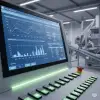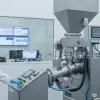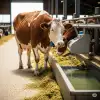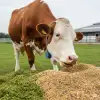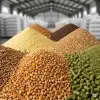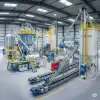The Importance of Laboratory Analysis and Quality Control in Feed Mills
The quality of products manufactured in feed mills is critically important for animal health and productivity. Discover the importance of laboratory analyses and quality control systems.
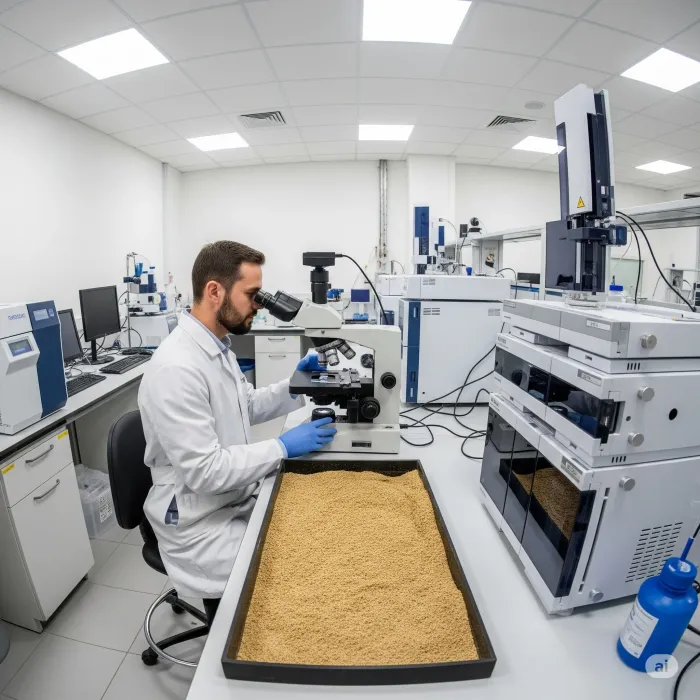
The Importance of Laboratory Analysis and Quality Control in Feed Mills
The quality of products manufactured in feed mills is critically important for animal health and productivity. Ensuring this quality is made possible through **laboratory analysis** and robust **quality control systems**. These controls, carried out at every stage of feed production, ensure both the correct selection of raw materials and that the final product has the expected nutritional values. So, why are laboratory analyses so important in feed mills, and what do quality control systems encompass?
Why Is Laboratory Analysis Essential?
Feed must provide the nutrients necessary for animals' growth, development, reproduction, and overall health. Therefore, it is vital that the components in the feed, such as protein, fat, fiber, vitamins, and minerals, are in the correct proportions.
1. **Verification of Nutritional Values:** Each animal species and age group has different nutritional needs. Laboratory analyses check whether the nutrients in the feed (crude protein, crude fat, crude fiber, starch, vitamins, minerals, etc.) comply with specified standards. This ensures that animals receive all the nutrients they require.
2. **Control of Raw Material Quality:** The quality of raw materials used in feed production, such as corn, soybean meal, and wheat, directly affects the quality of the final product. Laboratories ensure that raw materials are checked for mold, toxins (like aflatoxin), heavy metal, pesticide residues, and other harmful substances upon receipt. Additionally, the moisture, protein, and energy content of raw materials are analyzed. This prevents poor-quality raw materials from entering production.
3. **Reduction of Disease Risks:** Contaminated feeds can lead to serious health problems and even fatalities in animals. The presence of microbes, bacteria (like Salmonella), or molds is detected through laboratory analyses, minimizing these risks.
4. **Compliance with Legal Regulations:** Feed production is subject to strict legal regulations in many countries. Laboratory analyses prove that feeds are produced in compliance with these regulations and standards (such as the Turkish Food Codex Feed Regulation).
5. **Prevention of Economic Losses:** The use of poor-quality feed leads to decreased animal performance, diseases, and consequently, economic losses. Quality control processes help prevent such losses.
Main Laboratory Analyses in Feed Mills
Here are some of the fundamental analyses regularly performed in a feed mill's laboratory:
- **Proximate Analysis (General Nutrient Analysis):**
- **Crude Protein Determination:** Determines the amount of protein in the feed.
- **Crude Fat Determination:** Measures the fat content in the feed.
- **Crude Fiber Determination:** Indicates the amount of indigestible fiber in the feed.
- **Dry Matter and Moisture Determination:** Determines the water content of the feed. Moisture content is critically important for mold formation and shelf life.
- **Ash Determination:** Shows the amount of mineral matter in the feed.
- **Mineral Analyses:** Determination of macro and micro minerals such as calcium, phosphorus, sodium, potassium, magnesium, zinc, iron, and copper. These minerals are indispensable for animal health.
- **Amino Acid Analyses:** The quantities of essential amino acids like lysine and methionine, which are critical for monogastric animals (poultry and pigs), are determined.
- **Vitamin Analyses:** Determination of fat-soluble vitamins such as A, D, E, and B-group vitamins.
- **Toxin Analyses:** The presence and quantity of mycotoxins like aflatoxin and ochratoxin are detected. These toxins are extremely dangerous for animal health.
- **Microbiological Analyses:** The hygienic quality of the feed is controlled by determining pathogenic bacteria such as Salmonella, E. coli, and total bacterial count.
- **Physical Analyses:** Physical properties of the feed such as color, odor, particle size, and pellet durability are evaluated. Pellet durability is important to prevent feed waste during transport and storage.
Quality Control Systems: Every Stage Under Assurance
Laboratory analyses are an integral part of quality control systems. Quality control not only involves analysis but also consists of a series of measures and protocols covering the entire production process:
1. **Raw Material Receiving Control:** Every batch of raw material arriving at the feed mill is sent to the laboratory for physical, chemical, and microbiological analyses. Only raw materials meeting quality standards are accepted into storage.
2. **Production Process Control:** Production parameters such as mixing ratios, grinding fineness, pelleting temperature, and pressure are continuously monitored and recorded. During this stage, samples are also taken from intermediate products for quick checks.
3. **Final Product Control:** Samples are taken from the finished feed at regular intervals for comprehensive laboratory analyses. These analyses ensure that the product meets all quality standards before being released for sale.
4. **Traceability:** Quality control systems enable backward traceability of every produced batch of feed, including which raw materials were used, when, and under what conditions it was produced. This helps to quickly identify the source of a problem if one arises.
5. **Personnel Training:** Spreading quality control awareness to all employees is essential. Regular training enhances staff knowledge and skills regarding hygiene rules, sampling techniques, and equipment usage.
6. **Documentation:** All analysis results, production records, and quality control reports are regularly recorded and archived. These documents provide important evidence for audits and legal requirements.
Conclusion
**Laboratory analyses** and **quality control systems** in feed mills are not just a legal requirement but are indispensable for animal health, productivity, and food safety. Through these systems, reliable, nutritious, and high-quality feeds are provided to farmers and consequently to consumers, laying the foundations for sustainable animal husbandry. In the journey of feed from farm to table, quality must be meticulously monitored at every step.
